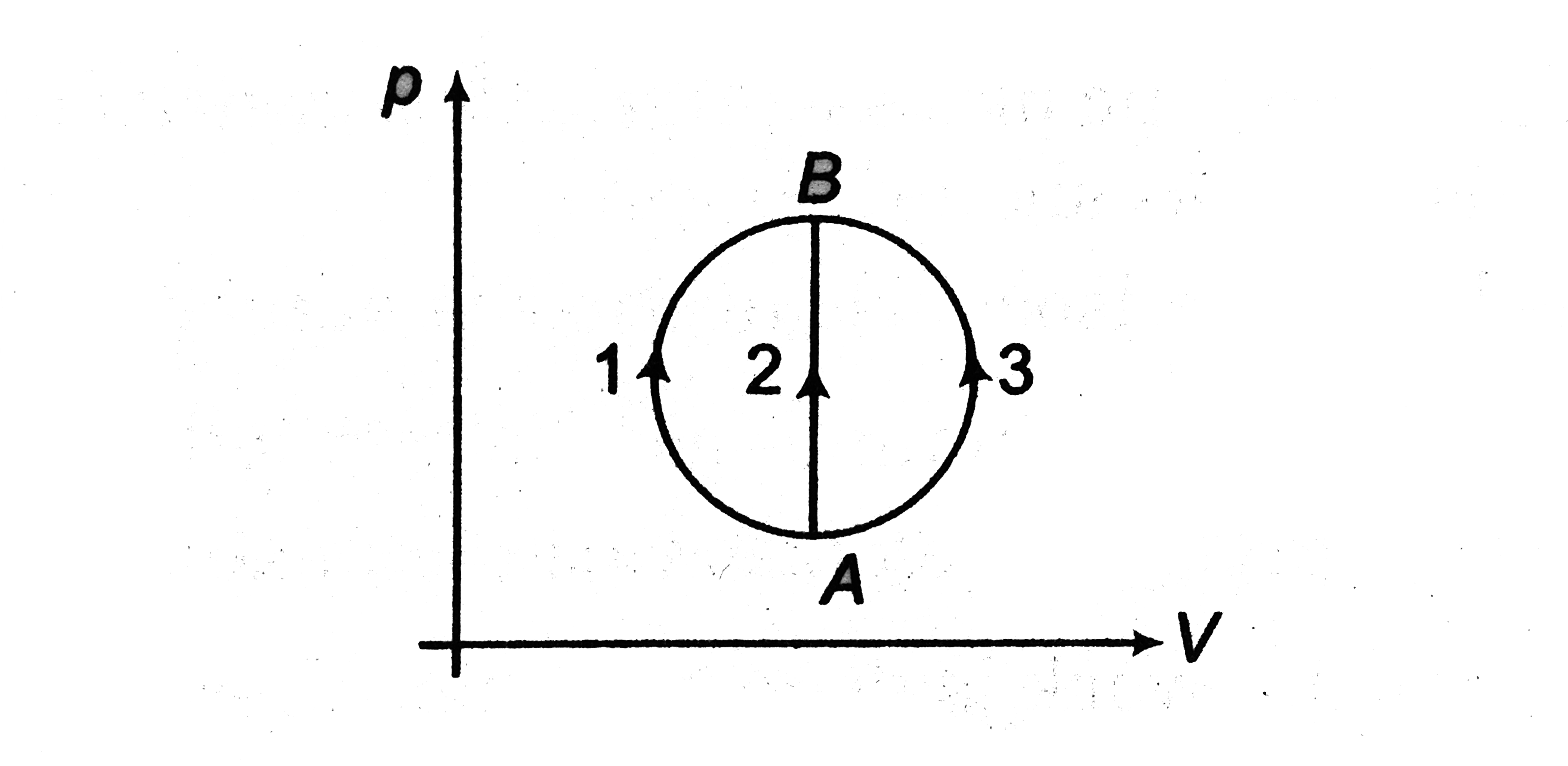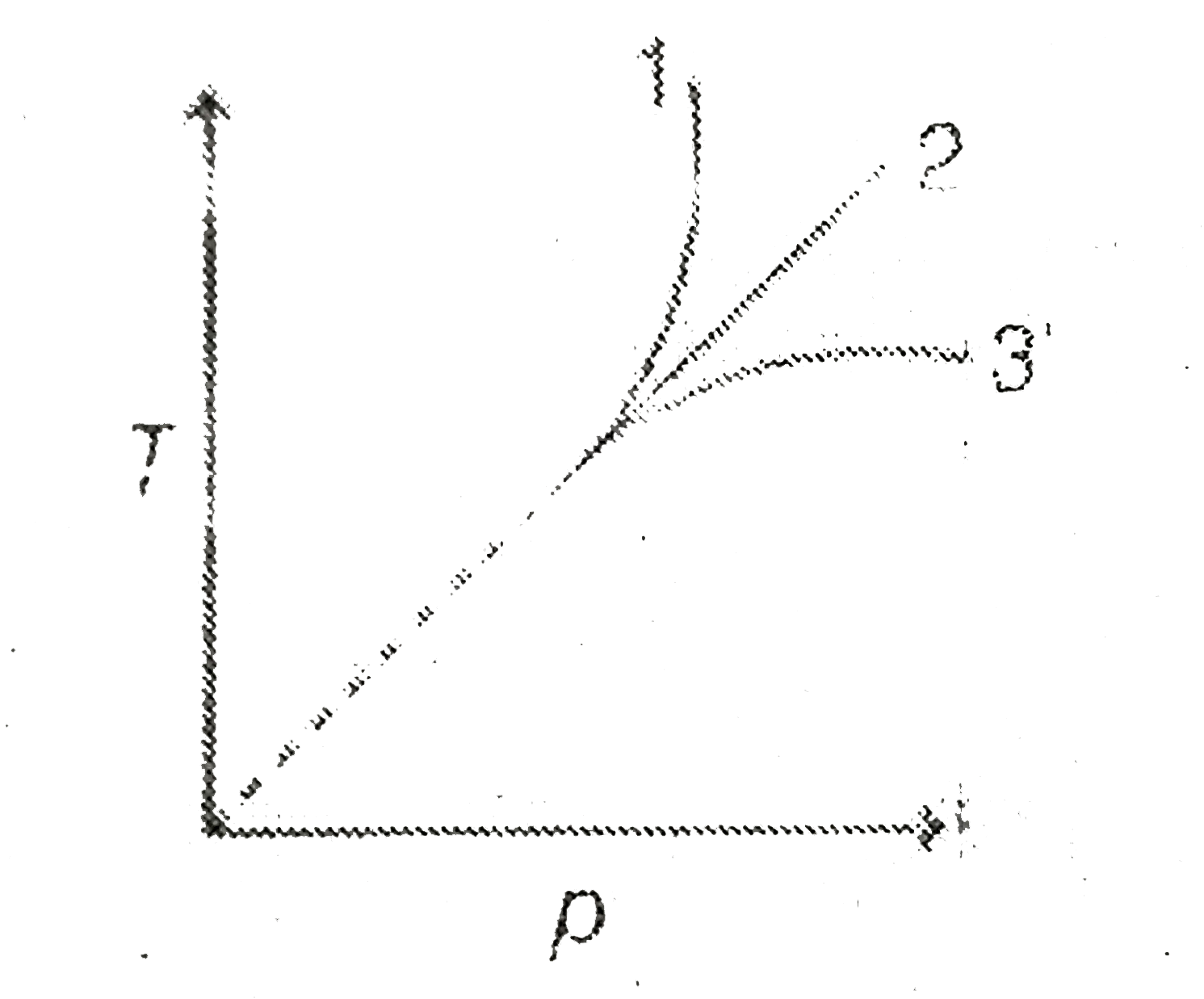Temperature of a monoatomic gas is increased from T0 to 2T0 in three different processes:
isochoric, isobaric and adiabatic. Heat given to the gas in these three processes are Q1,Q2andQ3 respectively. Then, choose the correct option.
(a) Q1>Q3
(b) Q2>Q1
(c) Q2>Q3
(d) Q3=0
The correct Answer is:A, B, C, D
To solve the problem, we need to analyze the heat added to a monoatomic gas during three different processes: isochoric, isobaric, and adiabatic. We will denote the heat added in these processes as Q1, Q2, and Q3 respectively.
Step 1: Heat in Isochoric Process
In an isochoric process (constant volume), the heat added to the gas can be calculated using the formula:
Q1=nCvΔT
where:
- n = number of moles of the gas
- Cv = molar specific heat at constant volume
- ΔT = change in temperature
Given that the temperature increases from T0 to 2T0, we have:
ΔT=2T0−T0=T0
Thus,
Q1=nCvT0
Step 2: Heat in Isobaric Process
In an isobaric process (constant pressure), the heat added can be calculated using the formula:
Q2=nCpΔT
where Cp is the molar specific heat at constant pressure. Using the same change in temperature:
Q2=nCpT0
Step 3: Heat in Adiabatic Process
In an adiabatic process, there is no heat exchange with the surroundings. Therefore, the heat added to the gas is:
Q3=0
Step 4: Comparing the Heats
Now, we can compare the heats Q1, Q2, and Q3:
1. Since Cp>Cv, it follows that:
Q_2 > Q_1 \quad \text{(since n C_p T_0 > n C_v T_0 )}
2. Since Q3=0, we have:
Q_1 > Q_3 \quad \text{(since Q_1 = n C_v T_0 > 0 )}
Conclusion
From the above comparisons, we can summarize the relationships as follows:
Q2>Q1>Q3
or in terms of the values:
Q2>Q1>0
Final Answer
Thus, the correct relations among the heats are:
- Q2>Q1
- Q1>Q3 (where Q3=0)
In an isochoric process (constant volume), the heat added to the gas can be calculated using the formula:
Q1=nCvΔT
where:
- n = number of moles of the gas
- Cv = molar specific heat at constant volume
- ΔT = change in temperature
ΔT=2T0−T0=T0
Thus,
Q1=nCvT0
In an isobaric process (constant pressure), the heat added can be calculated using the formula:
Q2=nCpΔT
where Cp is the molar specific heat at constant pressure. Using the same change in temperature:
Q2=nCpT0
In an adiabatic process, there is no heat exchange with the surroundings. Therefore, the heat added to the gas is:
Q3=0
Now, we can compare the heats Q1, Q2, and Q3:
1. Since Cp>Cv, it follows that:
Q_2 > Q_1 \quad \text{(since n C_p T_0 > n C_v T_0 )}
2. Since Q3=0, we have:
Q_1 > Q_3 \quad \text{(since Q_1 = n C_v T_0 > 0 )}
From the above comparisons, we can summarize the relationships as follows:
Q2>Q1>Q3
or in terms of the values:
Q2>Q1>0
Thus, the correct relations among the heats are:
- Q2>Q1
- Q1>Q3 (where Q3=0)
Topper's Solved these Questions
- LAWS OF THERMODYNAMICSBOOK - DC PANDEY ENGLISHCHAPTER - LAWS OF THERMODYNAMICSEXERCISE - Level 2 Passage I
2 Videos
- LAWS OF THERMODYNAMICSBOOK - DC PANDEY ENGLISHCHAPTER - LAWS OF THERMODYNAMICSEXERCISE - Level 2 Passage II
3 Videos
- LAWS OF THERMODYNAMICSBOOK - DC PANDEY ENGLISHCHAPTER - LAWS OF THERMODYNAMICSEXERCISE - Level 2 Single Correct
27 Videos
- LAWS OF MOTIONBOOK - DC PANDEY ENGLISHCHAPTER - LAWS OF MOTIONEXERCISE - Medical entrances gallery
39 Videos
- MAGNETIC EFFECT OF CURRENT AND MAGNETISMBOOK - DC PANDEY ENGLISHCHAPTER - MAGNETIC EFFECT OF CURRENT AND MAGNETISMEXERCISE - Integer type Questions
10 Videos
Similar Questions
A gas undergoes A to B through three different processes 1,2 and 3 as shown in the figure. The heat supplied to the gas is Q1, Q2 and Q3 respectively, then

View SolutionTemperature of four moles of a monoatomic gas is increased by 300K in isochoric process. Find W, Q and ΔU.
View SolutionThe temperature of n-moles of an ideal gas is increased from T0 to 2T0 through a process p=αT. Find work done in this process.
View SolutionTemperature of two moles of a monoatomic gas is increased by 300K in the process p∝V. Find
(a) molar heat capacity of the gas in the given process
(b) heat required in the given process.
View SolutionTemperature of two moles of a monoatomic gas is increased by 300 K in the process p∝V.
(a) Find molar heat capacity of the gas in the given process.
(b) Find heat given to the gas in that.
View SolutionRMS speed of a monoatomic gas is increased by 2 times. If the process is done adiabatically then the ratio of initial volume to final volume will be
View SolutionTemperature of two moles of an ideal gas is increased by 300K in a process V=aT, where a is positive constant. Find work done by the gas in the given process.
View SolutionA monoatomic gas undergoes a process given by 2dU+3dW=0, then what is the process
View SolutionTemperature of 1 mole of an ideal gas is increased from 300K to 310K under isochoric process. Heat supplied to the gas in this process is Q=25R, where R=universal gas constant. What amount of work has to be done by the gas if temperature of the gas decreases from 310K to 300K adiabatically?
View SolutionGiven T-p curve for three processes. Work done in process 1, 2 and 3 (if initial and final pressure are same for all processes) is W1,W2 and W3 respectively. Correct order is

View Solution
